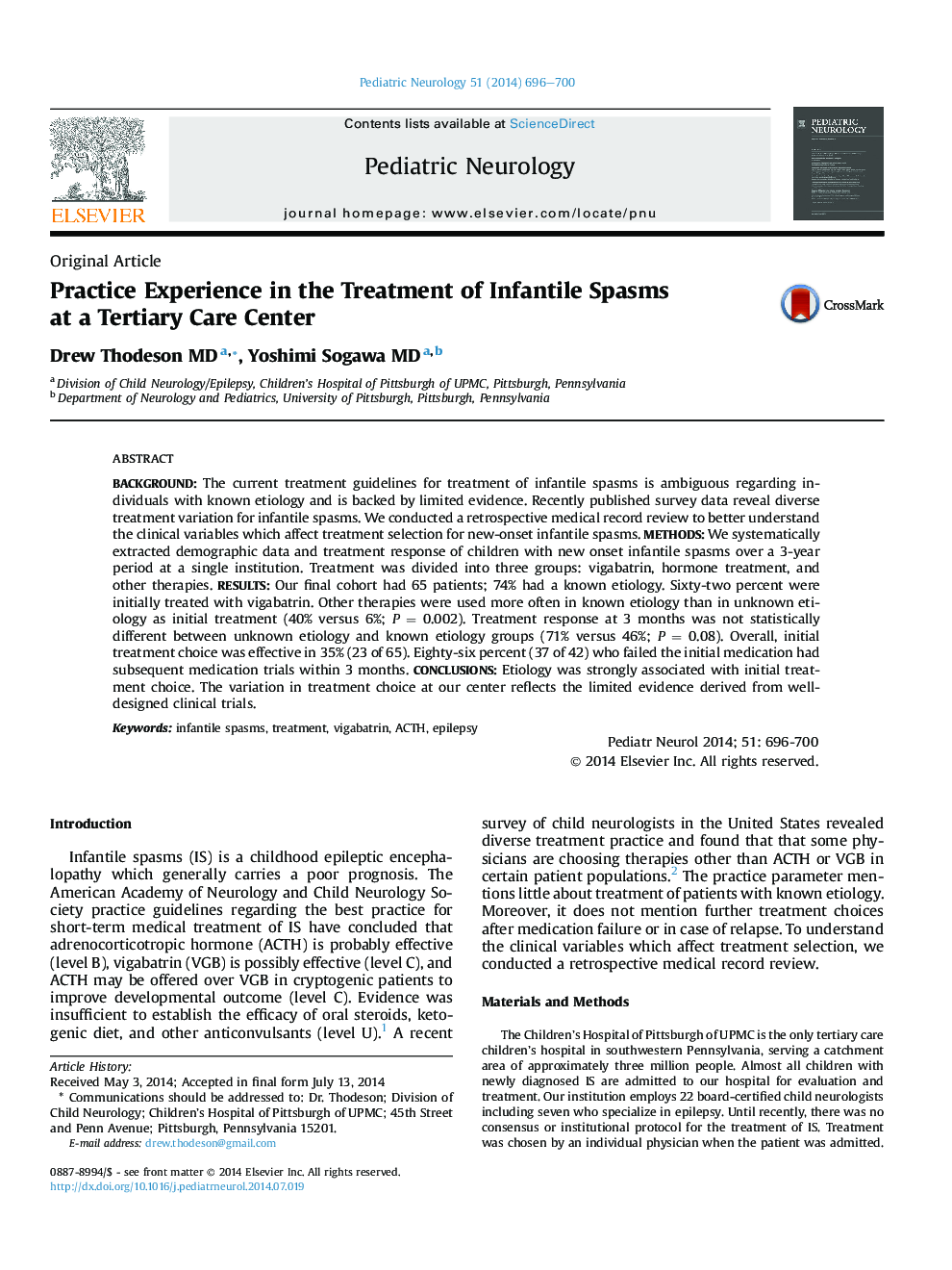| Article ID | Journal | Published Year | Pages | File Type |
|---|---|---|---|---|
| 3084761 | Pediatric Neurology | 2014 | 5 Pages |
BackgroundThe current treatment guidelines for treatment of infantile spasms is ambiguous regarding individuals with known etiology and is backed by limited evidence. Recently published survey data reveal diverse treatment variation for infantile spasms. We conducted a retrospective medical record review to better understand the clinical variables which affect treatment selection for new-onset infantile spasms.MethodsWe systematically extracted demographic data and treatment response of children with new onset infantile spasms over a 3-year period at a single institution. Treatment was divided into three groups: vigabatrin, hormone treatment, and other therapies.ResultsOur final cohort had 65 patients; 74% had a known etiology. Sixty-two percent were initially treated with vigabatrin. Other therapies were used more often in known etiology than in unknown etiology as initial treatment (40% versus 6%; P = 0.002). Treatment response at 3 months was not statistically different between unknown etiology and known etiology groups (71% versus 46%; P = 0.08). Overall, initial treatment choice was effective in 35% (23 of 65). Eighty-six percent (37 of 42) who failed the initial medication had subsequent medication trials within 3 months.ConclusionsEtiology was strongly associated with initial treatment choice. The variation in treatment choice at our center reflects the limited evidence derived from well-designed clinical trials.
